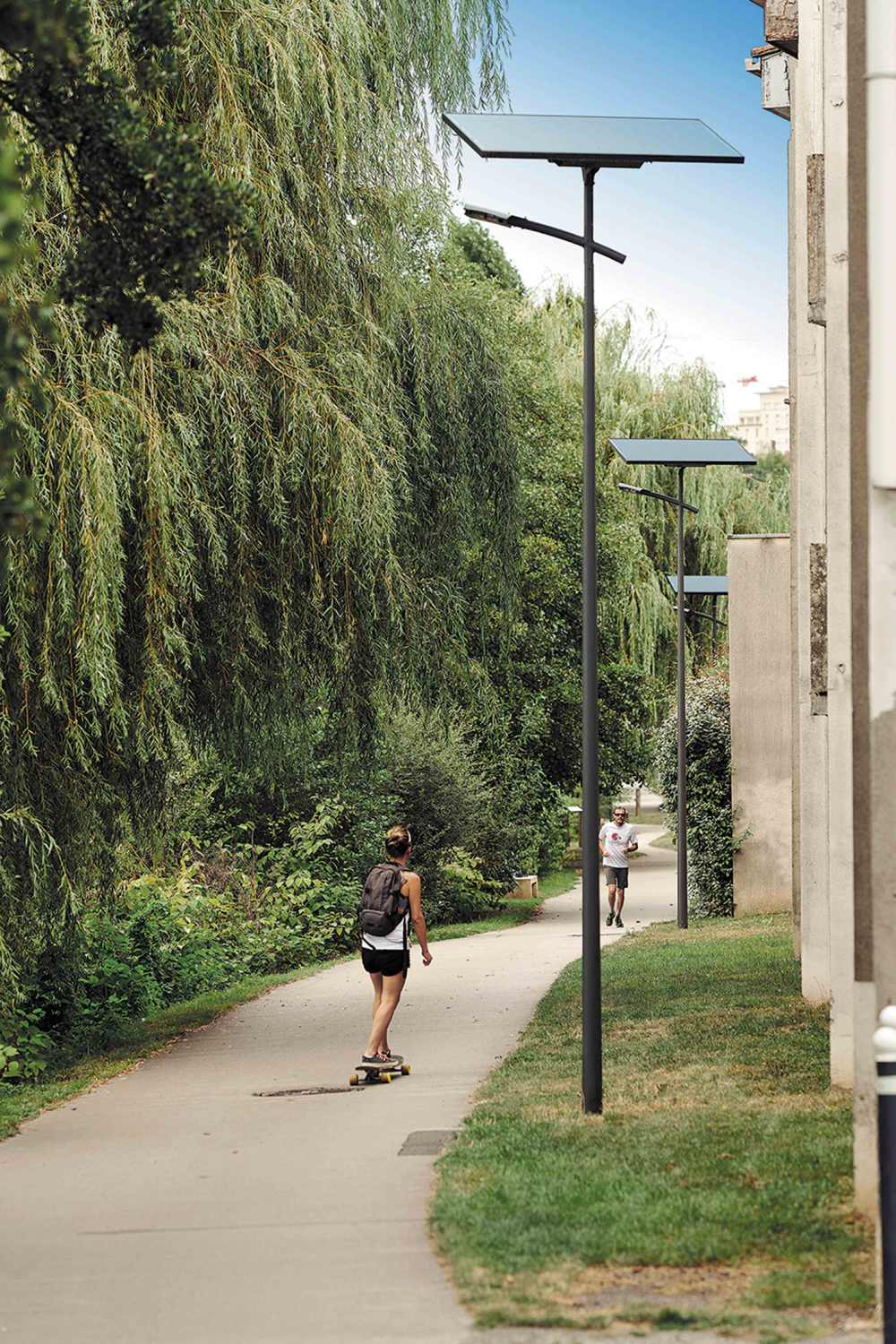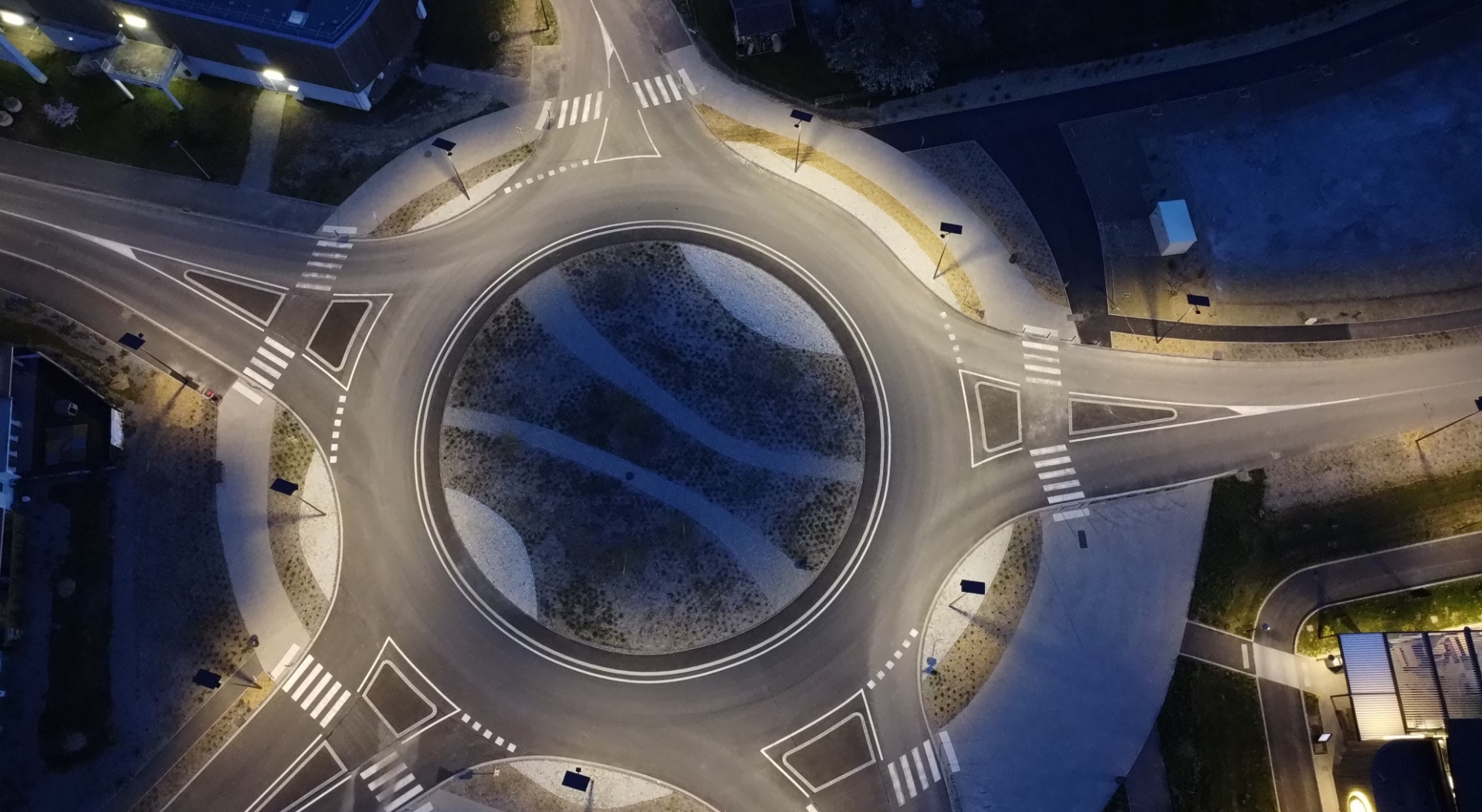Solar street lighting: a step towards a green city
The green city: city of the future
The concept of the green city is becoming increasingly popular, but what does it really mean?
It is based on the principle of sustainable urban development. This involves creating urban environments that incorporate environmentally-friendly practices, while promoting a better quality of life for residents.
The distinctive features of a green city, which are also akin to the 'smart city', include intelligent urban planning, efficient resource management, the adoption of environmentally-friendly transport, and of course the introduction of initiatives such as solar LED lighting. The main aim is to urbanise and improve our cities while preserving the ecology and respecting biodiversity and different environments. Energy self-sufficiency is the challenge facing the cities of today and tomorrow.

Regulations to encourage the installation of solar-powered public streetlights
To encourage the adoption of solar street lighting, numerous regulations and standards are being put in place.
The decree of 27/12/2018, for example, which relates to the prevention, reduction and limitation of light pollution requires that for new streetlight installations, the ULR (Upward Light Ratio) must be less than 1%. In other words, the luminous flux must not exceed the horizontal line of the LED luminaire, so as not to illuminate the night sky. As light pollution is an important issue that needs to be tackled, this decree helps to preserve the starry sky and biodiversity.
Many other regulations exist, such as EN 13201 and EN 40.
These rules are designed to encourage municipalities to opt for sustainable lighting solutions, thereby reducing the carbon footprint of towns and cities.
In addition, financial aid programmes such as the Green Fund, ADEME (French Environment and Energy Management Agency) and European funds can help finance solar street lighting projects. Among other things, this aid enables towns and cities to move towards an energy and ecological transition.
Positive impact on sustainable urban development
Solar street lighting plays a crucial role in sustainable urban development, making urban spaces safer while promoting the ecological transition. By replacing traditional wired lighting with solar streetlights, towns and cities can reduce their energy consumption and greenhouse gas emissions. The use of solar energy ensures functional, clean lighting thanks to photovoltaic panels, preserving biodiversity and combating pollution.
What's more, by installing intelligent streetlights, local authorities benefit from a system that is reliable over the long term, with an extended lifespan and greater energy efficiency.
In addition, the network of solar streetlights offers numerous environmental benefits, helping to create safer and more pleasant public spaces for residents all year round.
Current trends and prospects for solar street lighting
Trends in public lighting show a growing adoption of solar solutions worldwide. More and more local authorities are incorporating this green technology into their urban planning in a move towards a smart city approach. The desire of populations and cities to reduce consumption and adopt a healthier, more sustainable lifestyle is also encouraging the installation of solar street lighting.
The outlook is promising, with ongoing innovations such as the integration of intelligent sensors that adapt to the environment and detect whether the streetlight has been damaged or vandalised.
In conclusion, solar LED lighting represents a significant step towards achieving green city objectives. With the right regulations and increased awareness, this sustainable technology will continue to shape the cities of the future towards a future that is more respectful of the environment and the quality of life of its inhabitants.







